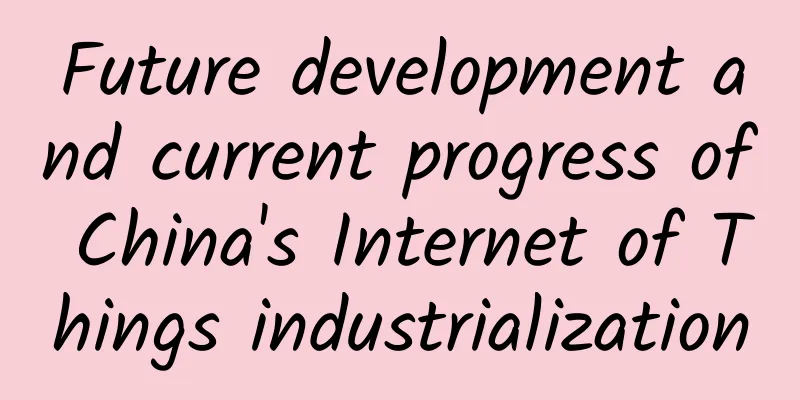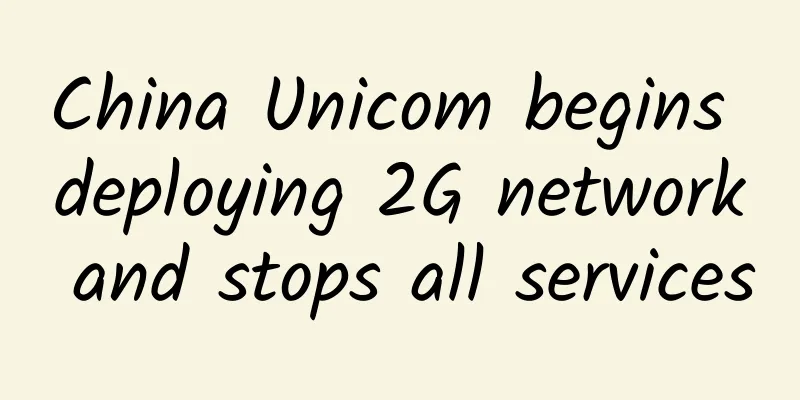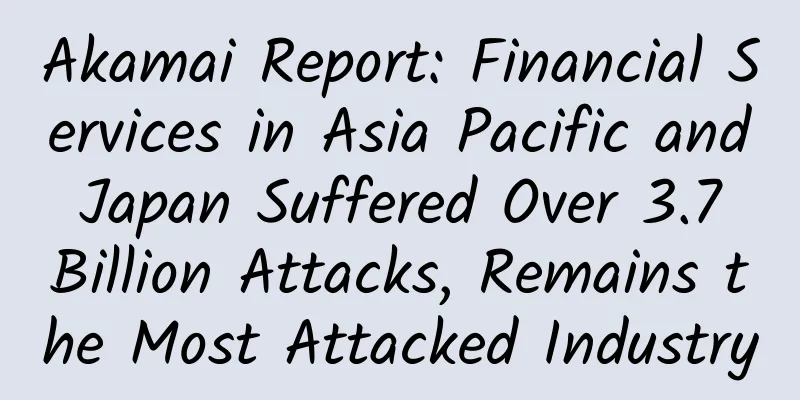Future development and current progress of China's Internet of Things industrialization

|
It cannot be denied that we are experiencing an era of intelligent interconnection of all things, and the speed of data generation has exceeded the imagination of ordinary people. When the resolution of smart cameras changes from 1080P to 4K, the amount of data collected by a camera in a day has increased from 100GB to 200GB; in 2020, the average amount of data generated by an Internet user per day may reach 1.5GB; and a smart hospital, after connecting all devices to the Internet, such as CT, MRI scanners, etc., will generate a total of more than 3TB of data per day. The above data reminds us all the time that the future will be a world of data! The data from the Internet of Things is even more impressive. In the development of the Internet of Things, two key factors will play an important role: one is artificial intelligence; the other is edge computing. Key factor 1: Artificial intelligence As AlphaGo defeated the best human chess player using reinforcement learning technology, we have recently seen that artificial intelligence applications have begun to be realized in some edge intelligence application scenarios. However, the development of artificial intelligence as a whole is inseparable from data, because it requires a large amount of data for training. As more and more unstructured data need to be processed and we need to discover the inherent connections from the unstructured data, artificial intelligence technology is the refinement of it. Key Factor 2: Edge Computing The increase in data volume is also driving the evolution of the entire computing model:
The development trend of the Internet of Things in the next ten years The first is the unification of IoT standards. Under the current concept of IoT, many countries and organizations around the world have formulated corresponding standards, including: EPC standard, one of the most widely used standards in the world; ISO standard formulated by the International Organization for Standardization; UID standard promoted by Japan; EPCglobal standard promoted by the EPCglobal Management Committee of the International Article Numbering Association, etc. my country is also stepping up the formulation of relevant IoT standards in combination with the technical standards of Europe, Japan and the United States. Without rules, there will be no order. As the Internet of Things develops, it is foreseeable that in the next decade, the standards of the Internet of Things will be gradually unified after fierce competition among countries, industries, and enterprises, forming several international standards for countries and enterprises around the world to follow. In other words, whoever is at the forefront of the world in formulating standards will have the right to speak in the future Internet of Things industry. Secondly, there will be a large integration in the three industrial chains of IoT sensing, transmission and application, forming an oligopoly. Although the concept of IoT is new, it is not an industry that came out of thin air. Currently, some Internet companies and telecommunications giants in the transmission field have begun to get involved in the IoT field. Given the huge market prospects of the Internet of Things, I believe that more large companies in various industrial chains will strongly integrate the entire industrial chain, and the possibility of an oligopoly in the Internet of Things in the next decade is very high. The emergence of monopoly will have a significant impact on my country's political, economic and social stability. In this regard, we must have a clear understanding and take action as soon as possible at the institutional and legal levels. IoT Architecture Finally, the application of the Internet of Things will be popularized from local applications to the whole society. At present, the application fields of the Internet of Things mainly focus on the identification of people such as identity recognition, the identification of objects such as animal traceability and asset management, and the identification of vehicles such as the non-stop toll collection system of urban roads and bridges. With the deepening of the development of the Internet of Things, the Internet of Things will penetrate into all aspects of social production and life. It will truly form a "world where everything is connected". We must be vigilant enough about the changes in human behavior, production and lifestyle caused by this major scientific and technological revolution, and predict its possible impact on politics, economy, culture, social stability, military and other aspects. China's advantage in developing the Internet of Things lies in the fact that my country started research on the core technology of the Internet of Things - sensor network technology - as early as 1999, and its research and development level is at the forefront of the world; in terms of Internet of Things infrastructure, my country's wireless communication network and broadband coverage are high, providing solid infrastructure support for the development of the Internet of Things; in terms of economic strength, my country has become the world's third largest economy and has relatively strong economic strength to support the development of the Internet of Things; at the same time, the strong support and guidance of government policies have created favorable conditions for the rapid development of the Internet of Things. The Internet of Things is divided into four stages: the first stage is the networking of mainframes and hosts, the second stage is the connection of desktops and laptops to the Internet, the third stage is the interconnection of some mobile devices such as mobile phones, and the fourth stage is the rise of embedded Internet. More application devices closely related to people’s daily lives, including washing machines, refrigerators, televisions, microwave ovens, etc. will join the ranks of interconnection and eventually form a global unified "Internet of Things". The IoT industry chain is long and offers many investment opportunities Investment in the Internet of Things is still in the early stages, not as popular as VR, so everyone should pay attention to opportunities in the Internet of Things. There are also Internet companies, Google and Amazon, which are leading the way in the United States because they have a large amount of user big data, they have funds, and can find the best talents. The Internet of Things must have top talents, so when you develop the Internet of Things, you must have data, funds, and the best talents. Only the best talents can make the best systems and products. In terms of industrial capital, large companies are introduced in the product model. For example, after Huawei entered the market through Huawei mobile phones, it built the entire ecosystem, including supply chain, retail, and the automotive industry. Internet companies such as Apple, Google, and Uber will also enter the Internet of Things. You must know that your opponents may come from traditional competitors or new Internet of Things companies. The way for new Internet of Things companies to survive is to do Internet of Things. The Internet of Things has become a globally recognized future development trend. It is currently gaining popularity throughout society at a very fast pace, changing industries and elevating them to new heights, such as the healthcare industry, the financial industry, and so on. New opportunities emerge almost every few months, so in order to keep up with the technological trend, this article lists the most likely Internet of Things trends in 2018. 1. Increased number of devices The Internet of Things is about connecting devices together and exchanging data, so by 2018, there will be more connected devices. Moreover, the connected devices here do not only refer to mobile phones and laptops, but we will be exposed to more and more "smart" devices in our daily lives, such as smart doors, smart door locks, etc. The growth in the number of "smart" devices will expand the processes that utilize the Internet of Things, making them easier and more accurate. In addition, the Internet of Things will become more usable and will not only be used in certain industries, but will also penetrate into daily personal use. The development and realization of smart cities will be an indispensable part of the Internet of Things. According to CSCO's forecast for IoT growth, the number of connected devices will exceed 50 billion by 2020. 2. Mobile devices are becoming more widely used
In order to connect with "smart" devices, users must have personal devices for managing smart homes, etc. Since the number of mobile users in the world is huge and still growing, smartphones will play a more important role in the future Internet of Things. Of course, we will spend less time and energy on certain actions, and life will become easier. 3. Personalized marketing platform Since personal information is accessible, users can process a large amount of data holistically, so marketers can set up personal ads on mobile phones or other platforms based on user behavior and profiles. Such an approach will change the relationship between users and product owners, focusing more on user needs, and business owners will be given a lot of information about customers to develop more effective marketing applications or methods. 4. Security Issues There is a question that everyone is concerned about in the development of the Internet of Things, that is, whether the Internet of Things will lead to serious security problems with such a large number of interconnected devices. Because even now, cyber attacks are quite frequent, so before implementing all innovative plans in real life, we must first consider possible security vulnerabilities and ensure data security. As the Internet of Things continues to penetrate our lives, new vulnerabilities emerge almost every day, which will threaten our personal and property safety in all aspects. For example, smart locks and security systems at home may be disabled by a thief; cars may be forced to open doors and start engines; implanted pacemakers and insulin pumps are also vulnerable to hacker attacks.
5. Big Data and AI Due to the increase in smart devices, we will use the Internet of Things more than we do now, and the amount of data processed will also grow rapidly. At this time, it is worth discussing how to properly process and analyze data resources. Compared with human computing, we will get more accurate results and analysis by using artificial intelligence and machine learning. All in all, it has huge potential in any area of our lives and if implemented properly, it can cause incredible changes that directly affect industries, government departments, and the lives of ordinary citizens. Breaking through development bottlenecks requires joint efforts from multiple dimensions The bottleneck of the current development of the Internet of Things is nothing more than the lack of underlying cutting-edge technology and innovative technology at the technical level. But what we lack is not a smart brain, nor an innovative spirit, but a calm attitude towards work, which is a core issue. Today, the entire TMT circle or the entire technology industry has an impetuous atmosphere. It is difficult for companies to calm down and do R&D and innovation. They only consider the market perspective. But only when you calm down, your R&D will be powerful, and you can truly transform your core capabilities to R&D-based. From the perspective of industrial development, IoT products are difficult to implement, which makes it difficult for small and medium-sized enterprises to survive and develop, and they are facing life and death issues. We all understand that only by finding products that solve problems in actual scenarios can we accelerate the implementation of products, promote the development of the market, and thus promote the development of the industry. In this step, the country and the government have already strongly supported it in the industrial field. As for C-end products, each enterprise needs to explore and innovate. As mentioned above, we should reduce homogeneous competition and vicious competition, maintain the healthy development of the industry, and do research and development calmly. With the support of the state and government and the large investment of private capital, we can raise the value and starting point of the industry as a whole, and bring the entire industry to the top of the world pyramid. In this way, in the next 5-10 years, we can gradually narrow the gap with and even surpass the advanced countries overseas in terms of technology. |
<<: About edge computing: Is it right for your business?
>>: How to make the audit of data center assets more efficient?
Recommend
Catch it all - Webpack project packaging 1
[[427986]] This article is reprinted from the WeC...
Introduction to TCP/IP Network Model
TCP/IP Network Model The TCP/IP model is the foun...
Let’s talk about HTTP pipelining
HTTP pipelining is a technique for sending multip...
Nexril: $9/quarter KVM-1GB/15G SSD/1TB/Dallas data center
Nexril is a site under Corex Solutions, LLC. It w...
Core Network Evolution (RCAF, PFDF and TSSF) - 3GPP REST API
Looking back at the diversity of technology devel...
Analysis of 5G network security issues
The fifth generation of mobile communication tech...
Front-end Science: What is an API Gateway? Why is it useful?
An API is often referred to as a front door for a...
The most feared problems when migrating from data center to IDC data center
1. Introduction When an enterprise wants to chang...
Kunpeng Lingyun Zhiyao Changan | Shaanxi Kunpeng Ecological Innovation Center calls on enterprise developers to "go to class"!
[51CTO.com original article] What changes can be ...
137,000 fans in 7 months?! "Smart Business" on Taihe Plaza Wi-Fi
The development of the Internet and the rise of e...
Ruijie Networks releases "U Space" solution, a new choice for remote office
Some time ago, Shenzhen, under the epidemic, cont...
The arrival of 5G is getting closer and closer. "Wi-Fi will die" is not an exaggeration
Recently, the foreign research organization OpenS...
IonSwitch: $1.75/month KVM-1GB/10G SSD/1TB/Idaho
IonSwitch is a foreign VPS hosting company establ...
RackNerd: Cheap VPS starting at $10 per year, multiple data centers in San Jose/Los Angeles/Seattle/New York/Dallas, etc.
This weekend, we will share the cheap VPS package...
The number of 5G package users has exceeded 200 million. How to tap the value of 5G?
Recently, the three major domestic operators have...









